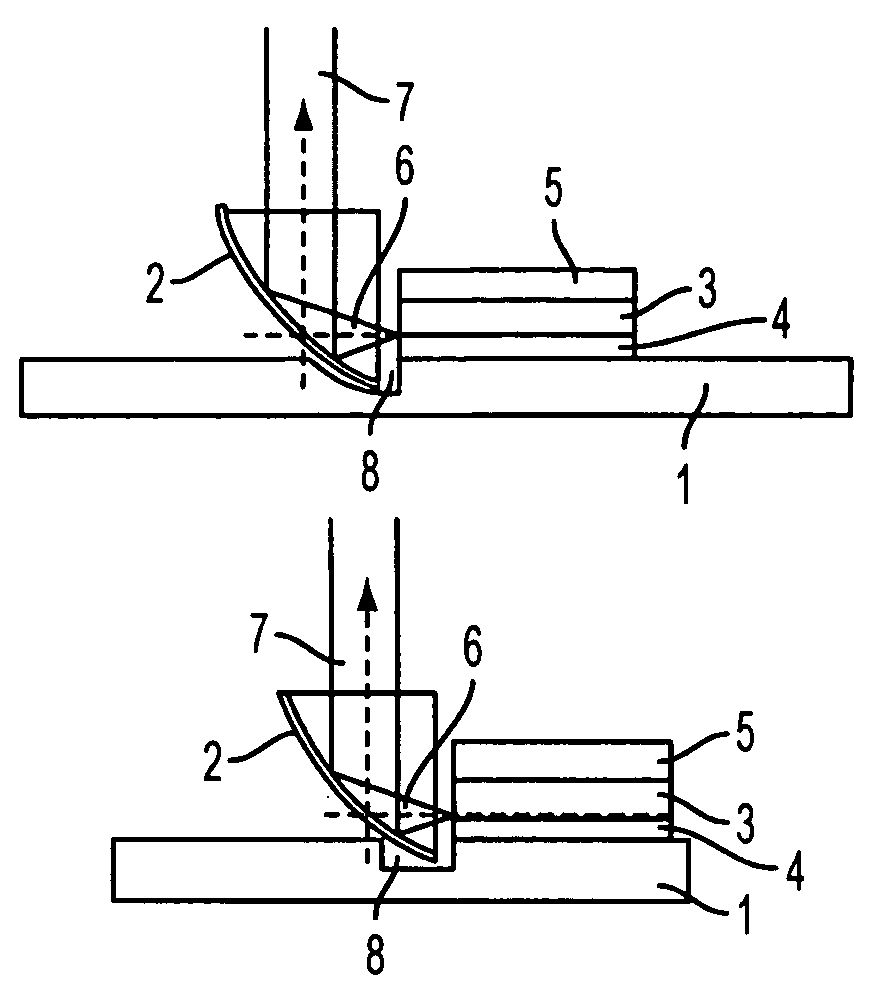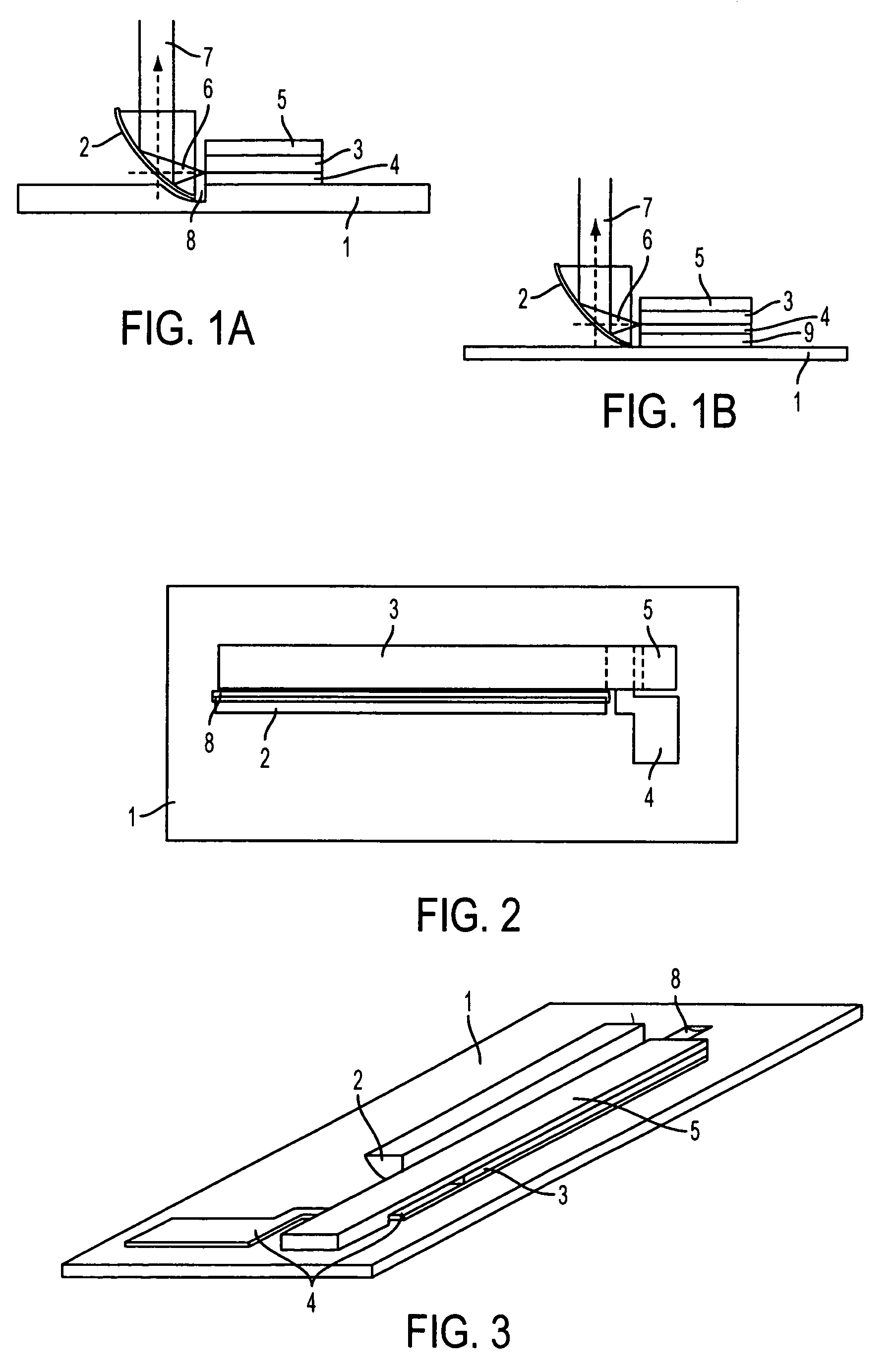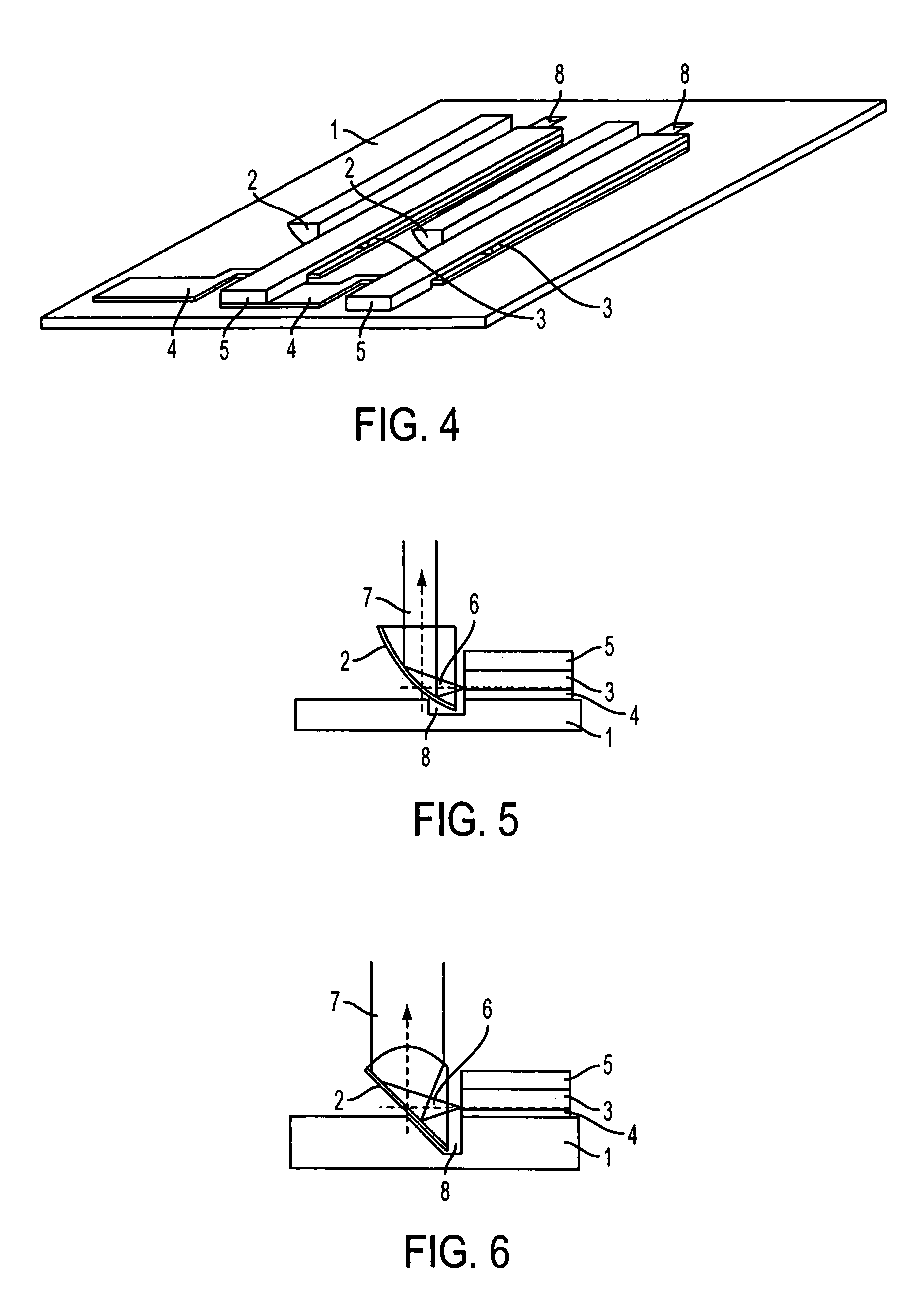Method and apparatus for use of beam control prisms with diode laser arrays
a beam control prism and laser array technology, applied in semiconductor lasers, instruments, optical elements, etc., can solve the problems of reducing efficiency, reducing the physical length of the diode plus beam control device, and generating enormous amounts of waste heat. , to achieve the effect of increasing the density of diode bars, reducing the physical length of the diode plus beam control device, and increasing the refractive index of the prism material
- Summary
- Abstract
- Description
- Claims
- Application Information
AI Technical Summary
Benefits of technology
Problems solved by technology
Method used
Image
Examples
Embodiment Construction
[0046]The subject invention relates to the use of a beam control prism for redirecting, and / or modifying the beam characteristics of, one or more sources of light. Such sources of light can include, for example, laser diodes, laser diode arrays, and / or diode bars. In a specific embodiment, the source of light can emanate from a diode bar mounted on a substrate.
[0047]The use of a prism with a reflective surface can enable the mounting of an edge emitting laser diode on a flat surface. Surface mounted construction can be simpler and can provide for better thermal management of the diodes, compared to conventional stack mounting technology. A specific embodiment of the subject invention is shown in FIG. 1A. This embodiment incorporates a reflective prism 2 mounted on an electrically insulated, thermally conductive substrate 1 next to an edge emitting laser diode 3. An electrical conductor 4 is applied on top of the substrate 1 to provide one of the electrical connections to the diode 3...
PUM
 Login to View More
Login to View More Abstract
Description
Claims
Application Information
 Login to View More
Login to View More - R&D
- Intellectual Property
- Life Sciences
- Materials
- Tech Scout
- Unparalleled Data Quality
- Higher Quality Content
- 60% Fewer Hallucinations
Browse by: Latest US Patents, China's latest patents, Technical Efficacy Thesaurus, Application Domain, Technology Topic, Popular Technical Reports.
© 2025 PatSnap. All rights reserved.Legal|Privacy policy|Modern Slavery Act Transparency Statement|Sitemap|About US| Contact US: help@patsnap.com



